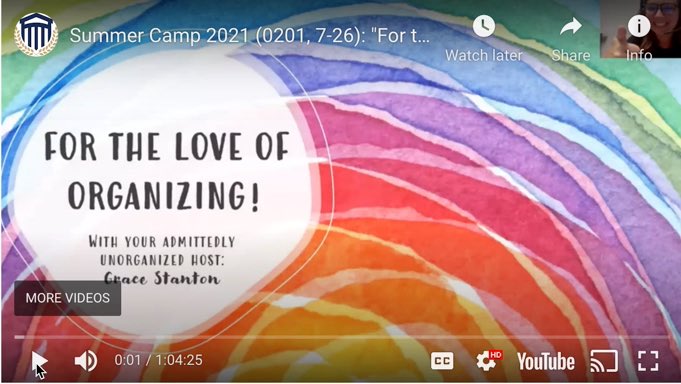In today’s society, online communication and collaboration is a necessity. The global Covid pandemic put educators in a scramble to find a way to put classes online. Quarantines forced people into isolation for extended periods of time with little to no interaction with others. These changes in our society have fueled the need for online collaboration and social tools. The shift has made us rethink ways to engage with our peers, students, teachers, and employers in a productive and meaningful way or just for fun. For this review I will evaluate Zoom— a social and collaboration tools in the top ten of the “Top 100 Tools for Learning in 2022”.
Zoom or Zoom One is a video meeting platform widely used in corporate, education, and personal settings. It is mainly a webinar, web meeting & virtual classroom tool. Zoom offers several plans to choose from depending on your need. In addition to a variety of Zoom One plans, Zoom also offers Zoom Phone, Zoom Events & Webinars, Zoom Rooms, Zoom contact Center, and the new Zoom whiteboard. I have been using zoom for at least three years and never knew the tool “Zoom” has expanded to an enterprise with so many product offerings. The free plan, “Zoom One”, is the product for which I am most familiar. Zoom integrates with and powers other software such as “Ring Central”. The organization where I am currently employed offers live mini online classes in the summer using Ring Central powered by Zoom. The class is also recorded for on-demand viewing. During the classes, instructors can poll the class to get instant feedback on a topic or break out into rooms for collaboration.
Zoom One is easy to use. The meeting organizer can schedule a meeting or immediately start a meeting and invite participants. Once the meeting is scheduled the organizer can simply share a link to the meeting room with instructions. Settings can be adjusted to preferences such as the addition of a waiting room or security passcode for users to join the meeting. Additional advanced settings are also available.
The free plan of Zoom One hosts up to 100 attendees for up to 40 minutes. The whiteboard is an exciting new feature with 3 editable boards and 25 MB of cloud storage. Other features include team chat and automated captions. The business plans have single sign-on, managed domains and company branding—features which are very important for security and making a connection between the community and the brand.
Zoom is already being used in classroom settings. Online universities for example use Zoom to host synchronous classes. This is a great way for teachers and students to make connections in an online environment. The addition of whiteboards to the video conferencing adds an extra layer of collaboration that could add value to a learning environment. The whiteboard templates offered a visual format with digital sticky notes that could be used to brainstorm or prioritize action items discussed in the meetings. The use of video helps bridge the distance gap of online learning. Share screen features allow teachers in a synchronous environment to directly share a presentation with participants and teach them from anywhere. The record option is also useful for creating an on demand video copy for asynchronous viewing.
This social tool creates an environment for live interaction that simulates a face-to-face meeting. With the addition of whiteboard functionality it also serves as a collaboration tool. It has evolved much in the three years that I have been using it. I imagine the next generation zoom user may have options for creating augmented reality visuals for learning and collaboration.
